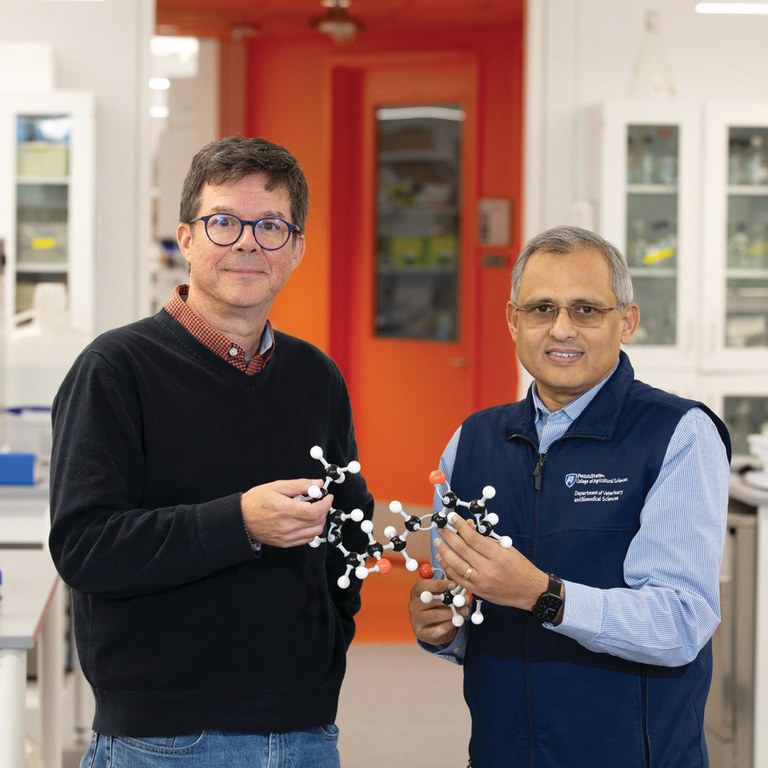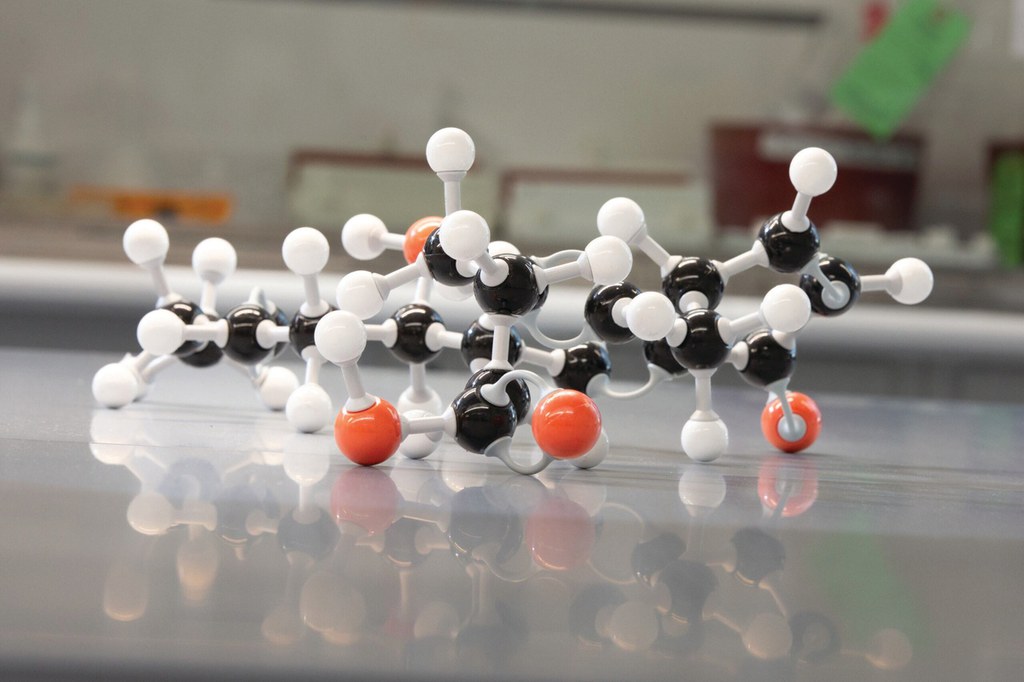Posted: April 3, 2024
Researchers reveal how dietary selenium initiates death of dangerous stem cells

Robert Paulson, left, and Sandeep Prabhu with a model of the cyclopentenone prostaglandin, or CyPG, molecule, which initiates a process leading to the death of leukemia stem cells. Photo Credit: Michael Houtz
Selenium-enriched diets may help ward off certain types of leukemia, according to researchers in the College of Agricultural Sciences who recently revealed how this trace mineral — found naturally in varying amounts in many foods — can hasten the death of leukemia stem cells.
Their findings, published in Cell Reports, could help lead to drug therapies that target acute myeloid leukemia, or AML, the most common blood and bone marrow cancer in adults, the researchers said.
AML is characterized by the proliferation of abnormal, leukemia-initiating stem cells in the bone marrow, blood and other tissues, explained lead author Sandeep Prabhu, professor of immunology and molecular toxicology and head of the Department of Veterinary and Biomedical Sciences.
"Treating acute myeloid leukemia is challenging because of these persistent, leukemia-initiating stem cells, which are typically not targeted by most existing therapies," Prabhu said.
The scientists previously found that supplementing the diets of mice with selenium stimulated the production of compounds known as cyclopentenone prostaglandins, which appeared to kill or suppress leukemia stem cells.

Cyclopentenone prostaglandin, or CyPG, molecule. Photo: Michael Houtz
Their latest study shows that these prostaglandins, called CyPGs, bind to and activate a gene, GPR44. That gene encodes a G-protein-coupled receptor, which is a protein on a cell membrane that transmits signals from extracellular substances. When expressed on leukemia stem cells, this receptor signals the cells to undergo programmed death.
"We had shown previously that if we supplement mice with selenium, we can treat their leukemia — make it less aggressive or even basically cure it," said study co-author Robert Paulson, professor of veterinary and biomedical sciences. "We wanted to understand the mechanism of how that worked, and in this study, we tested it by getting rid of the GPR44 gene to see what would happen without the receptor."
The result was that mice with the GPR44 receptor receiving selenium supplementation had significantly better outcomes than ones in which the receptor was deleted.
"In mice that lack the receptor, the leukemia becomes extremely aggressive. It's like taking the brakes away," Prabhu said. He pointed out that leukemia-initiating stem cells resemble normal blood-forming stem cells; and while CyPGs induced leukemia stem cell death, they had no impact on normal blood-forming stem cells in the bone marrow.
"Now that we know that this receptor is key, it's more likely that we'll identify a subset of leukemias that would be responsive to this kind of therapy," Paulson said.
—Chuck Gill
Features
Fostering Forests
Across the United States, forests face unprecedented threats, and scientists in Penn State's College of Agricultural Sciences are conducting novel and complex research to conserve them.
Buzzing With Purpose
Community scientists work to protect Pennsylvania's wild bees
Conservation Reimagined
Exploring new approaches to cope with a changing climate


